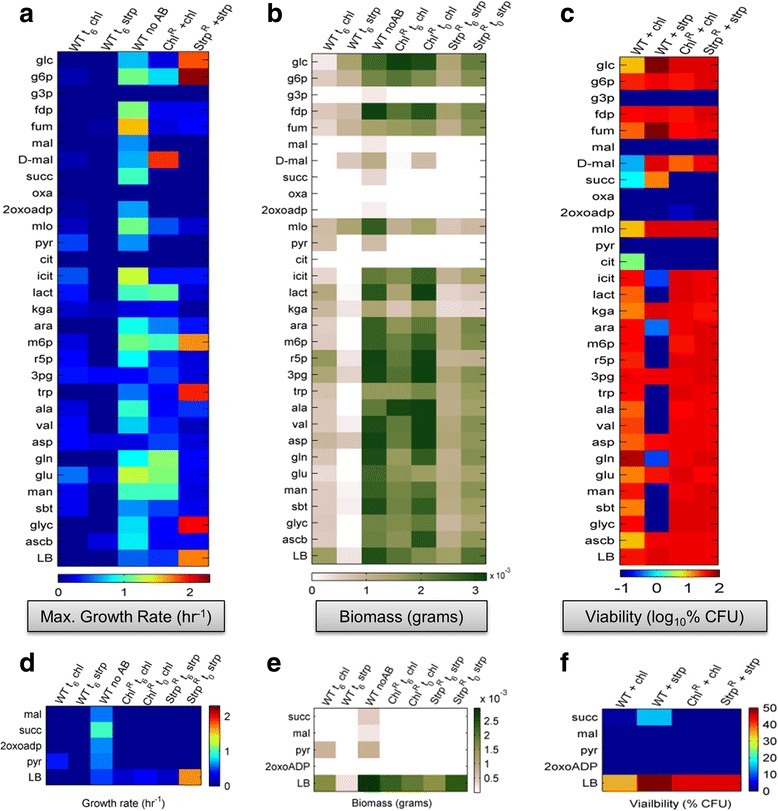Fig. 3.

Systematic evaluation of microenvironment metabolite supplemented antibiotic effects on biomass, growth and viability for the three populations. a The heat map represents the exponential growth rates (measured fitness) of the WT, ChlR and StrpR populations on multiple microenvironment metabolites. The predominantly blue-scale of the wild type in presence of antibiotics (first two columns) indicate the bactericidal and bacteriostatic effect of antibiotics. The last two columns show the evolution of resistance as indicated by the increased growth rates. The Inset (d) highlights the four metabolites maleate, succinate, pyruvate and 2oxoadipate on which growth rates are minimal even for the resistant populations. b The heat map represents the maximum amount of biomass after 30 h (as cell dry weight) that is produced by the WT, ChlR and StrpR populations on multiple microenvironment metabolites. The Inset (e) highlights the four metabolites maleate, succinate, pyruvate and 2oxoadipate on which biomass was minimal. The effect of initial colony forming units was assessed by adding at the start of the culture (t0) and 6 h after growth (t6). c The heat map represents viability (as log 10 values of colony forming units/ml) after 48 h in the absence of antibiotics on rich LB media plates. The inset (f) once again confirms the effect of the four metabolites maleate, succinate, pyruvate and oxoadipate on which viability is null
